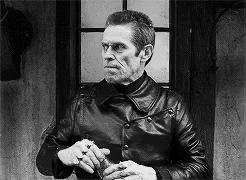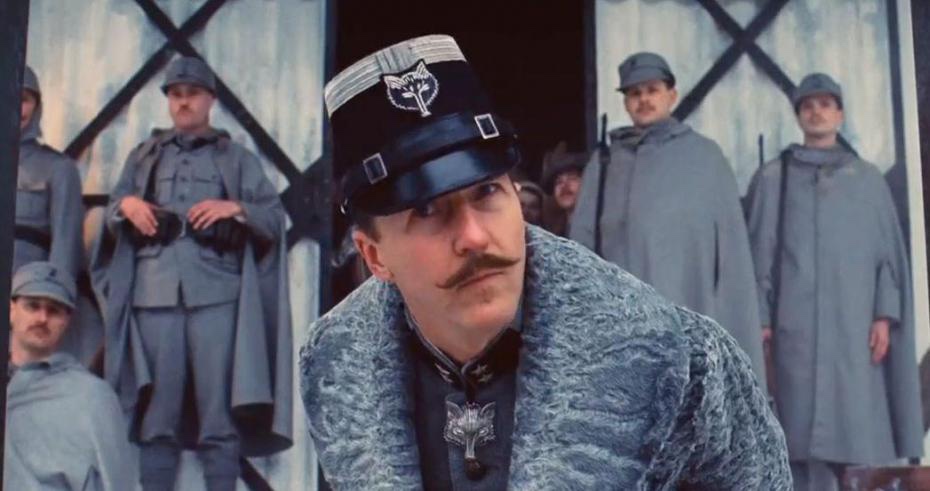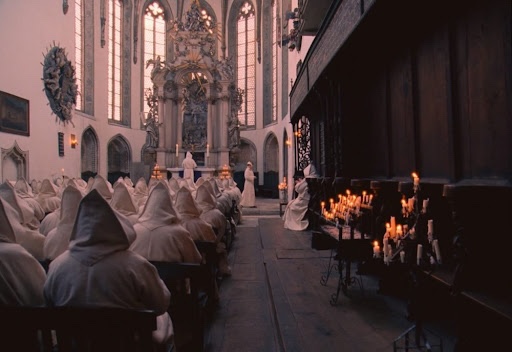We were tasked to analyse the sound from the 25th and 26th chapter of The Grand Budapest Hotel. In class, we discussed the deliberate and considered use of diegetic and non-diegetic sound throughout.
Chapters 25-26: The Remote Foothills
The first use of sound featured in the chapter is the implementation of Alexandre Desplat’s non-diegetic composed score. Featured throughout the entire duration of the two chapters, Desplat’s score can be described as dark in nature as well as layered. For example, the pulsing rhythm employed in the first scene perfectly matches the on-screen visuals. Furthermore, the utilisation of particular instrumentation such as a pipe organ foreshadows Gustave and Zero’s later visit to a church.
Anderson expertly makes use of layered diegetic wind sounds, as well as subtle ambient sound effects in order to attract the audience’s attention. The first scene also uses diegetic dialogue as well as emphasised diegetic sound effects attributed to Joplin’s character. Examples including the brandy bottle and the coat poppers attribute a sense of menace to his character.

It is also important to make note of the fact that only the objects of diegetic significance receive sounds, such as the coins as well as the crunching snow. During the startup of the motorbike engine, Anderson interestingly cuts off the sound as the shot cuts to the jarring train whistle. This is then followed by the non-diegetic narration from Zero, during which the other sounds decrease in the mix.
As the train comes to a halt, the diegetic sounds of hissing steam and brakes increase in the mix. During which, the repeated rhythmic pulsing score give the film a playful pace. The score reduces in the mix as the train door opens to reveal Henckels’s character. The emphasised diegetic sniffs inform the viewer that the ZZ is now aware of Gustave’s presence.

As we cut to an extreme long shot of the observatory, the mix becomes more echoey. The movement temporarily stops, during which the diegetic wind ambience is attributed. Due to the fact that the characters are far away, the dialogue decreases in the mix and increases as we move in closer. As a new character enters, the diegetic footsteps become gradually louder to focus our attention.
As our characters are instructed towards their next goal, the non-diegetic composed score rises in the mix to create a loud and dramatic atmosphere. Anderson then interestingly makes the stylistic choice to make the screeching of the cable car occur in time with the score. This exemplifies the rhythmic flow of the film and instills satisfaction within the viewer.
The score rises in the mix as the characters approach their destination. It also illustrates a sense of playfulness to perfectly match the cartoon-like nature of the characters. As the characters enter the church, the timbre of the now diegetic score becomes echoed a capella voices. As the characters sit down, the score lowers in the mix to a single voice to focus the viewer’s attention on the ensuing conversation between the characters.
The movement stops as we cut to the confession booth, in doing so the dominant sound that can be heard is the diegetic dialogue which is accompanied by a very low, mournful score. The score then slowly rises in the mix as Gustave makes the revolution that there is a second will. As the scene cuts to black, we are forced to picture the scene as we hear the diegetic sound of the body falling . As the chase ensues, the driving percussive elements of the score increase and proceeds to stop as the movement stops.

Another great post. Keep it up!
LikeLike